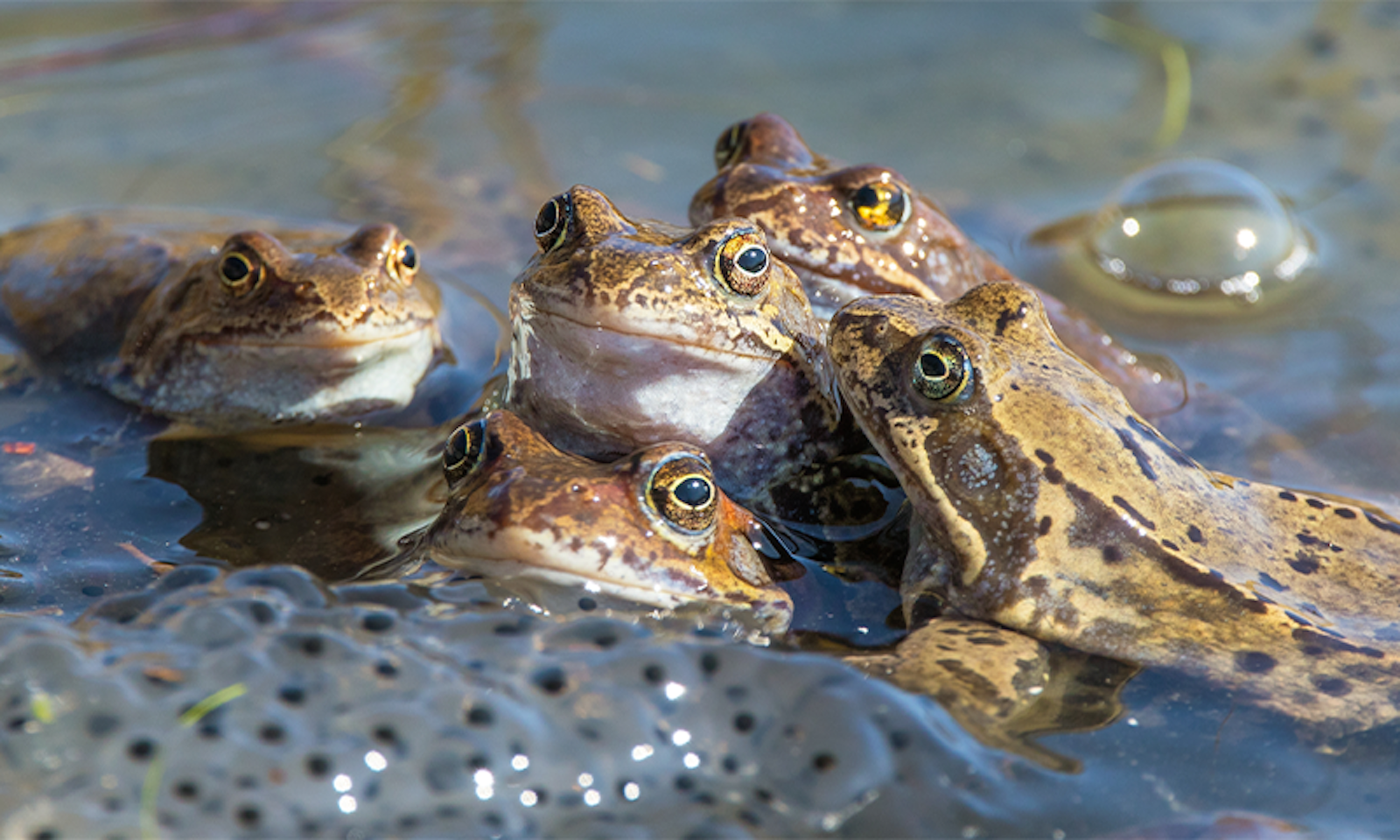When it comes to sex, some female frogs are faking it fairly often—but in a different way than you may think. They are feigning their own deaths when accosted by males they don’t like, a peculiar behavior researchers found in a new study published in Royal Society Open Science.
Mother Nature hasn’t given common frogs, Rana temporaria, much time for courtship. The creatures, which live throughout Europe and in some parts of Asia, have a very short window to procreate—just a few days in the spring. Some of them overwinter in the deep muddy areas of lakes and ponds, and others nestle in burrows on land, but as their mating season arrives, and temperatures climb to about 41 degrees Fahrenheit (5 degrees Celsius), the frogs all stop hibernating, and wait for rain. Even before they have their first meal, the mating game begins. Yes, these frogs embark on their nuptial night on empty stomachs.
Female frogs grunt like males to throw them off.
“If it rains and it is above 5 degrees they will start migrating, and they come to the pond really quickly,” says Carolin Dittrich, the lead author of the study and a biologist at the Museum of Natural History, in Berlin. And then a frog orgy ensues, which doesn’t always end well for females.
To mate, males position themselves on females’ backs, tightly gripping them with front legs, “froggy style,” or amplexing. There are usually fewer females than males in a pond, and the time to find a mate is very short, so competition is fierce. Several males often cling to one female, forming “mating balls” in the water, which can drown the female. Sometimes a few males can go down with her—and croak, too. “This aggressive behavior is a consequence of this short breeding season and lack of females,” says Dittrich. Scientists call this rapid mating “explosive breeding.”
Until now, scientists largely believed that female frogs were passive in these explosive breeding sessions. Although, the fact that they fight back had been noted before in 1758, Dittrich says, by the naturalist Rösel von Rosenhoff in The Natural History of the Frogs in This Country. The death feigning was again mentioned in the 1960s, but was never researched in depth, likely because at the time, female animals were not thought to have much agency in sex. “But in the last couple of years,” Dittrich says, “we looked more into what females are doing.”
Dittrich got some frogs to mate in boxes of water and found that females employ a few clever tactics to quite literally throw the unwanted suitors off. One tactic they use is to simply twist out of the male’s grasp, which is not always successful. In some cases, the females use this approach to test the males’ strength, because choosing a stronger partner who can kick off other males lowers the risk that a deadly mating ball will form. Another technique they use is to mislead the suitor into thinking that he has grasped a member of the wrong sex. To do that, female frogs grunt like males. “I think this signal is given to say, ‘I’m a male, so don’t waste your time—go find somebody else,’” Dittrich says.
Females may also feign death—what scientists call “tonic immobility,” stiffening with “arms and legs outstretched from the body,” sometimes for hours, the authors write—to trick an amplexing male into giving it up. It’s a clever way to avoid mating or male harassment, the researchers say. The trick’s been observed more often as a ploy to ditch predators. Dittrich watched about half of the amplexed female frogs—25 of 54—free themselves from mates they didn’t like, mostly by twisting away from the males’ clasp, while feigning death was used about a third of the time.
The good news? In the ponds, they may have even greater odds of escape, better than 50-50, Dittrich adds. That’s because, in lab experiments, the frogs have nowhere to run. “I think in nature the odds could be a bit better,” Dittrich says, “because they could just dive away or hide.”
How common is faking death to ditch unwanted mates in the animal world? So far, it’s been observed mainly in some spiders and dragonflies, and only in one other amphibian, the sharp-ribbed newt. But the study hints that such escape strategies may be more common than we think. Scientists may find that other species deploy some clever escape tactics, too—if they pay close attention. ![]()
Lead image: Daniel Prudek / Shutterstock
































